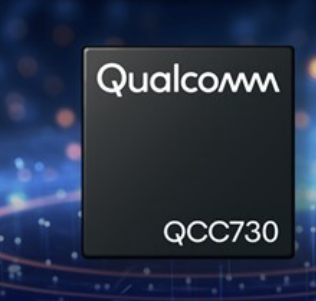
By Claus Hetting, Wi-Fi NOW CEO & Chairman
Intel and Meta continue to work together to bring more immersive wireless VR experiences to PC users. At this year’s Mobile World Congress the two companies demonstrated how new laptops with Intel® Wi-Fi 7 (5 Gig) cards and Meta Quest 3 Head-Mounted Displays (HMDs) will soon be able to deliver a simplified low-latency wireless VR remote desktop experience. The new collaboration may help accelerate the use of PC-based productivity applications with wireless VR HMDs, Intel says.
At last year’s CES, Intel and Meta highlighted how Intel® Double Connect Technology and Quest HMDs enable VR gaming through direct wireless access to PCs for computing and graphics capabilities. The demo showed how lag was minimised on high-end gaming PCs with premium Intel® Killer™ Wi-Fi 6E AX1690 cards. This solution used one Wi-Fi radio for the PC-HMD VR connection and a second Wi-Fi radio for the PC-to-router connection, allowing the Meta Quest HMD to bypass the router for direct wireless access to PC games, resources, and Intel® Killer™ Networking software.
Innovation: Bringing the AR/VR experience to the mainstream PC
But AR/VR technology is evolving fast and gamers are now no longer the only segment benefiting from untethered spatial computing. Intel and Meta continue to work together to expand the benefits of AR/VR technology to mainstream laptops and productivity use cases, complete with better PC-HMD pairing. Added support for 6 GHz will help pave the way for higher-resolution graphics for VR applications, Intel says.
Meanwhile at MWC the companies showcased the result of their latest collaboration with a feature expected to hit the markets in 2H2024. The feature that enhances Wi-Fi connectivity between mainstream PCs and Meta Quest HMDs. Intel’s AI-based PC networking optimization software (Intel® Connectivity Performance Suite) for consumer and business laptops has now been enhanced so that more users will be able to benefit from the Meta Quest HMD wireless PC VR experience.
The jointly developed solution lets users bring their laptops into the virtual world by projecting their PC desktop into the Meta Quest environment. This may help accelerate the use of PC-based productivity applications with wireless VR HMDs, Intel says.
Low-latency connectivity is key for the AR/VR user experience
Connectivity is particularly important for the use case to be attractive – Intel says – so Intel has worked closely with Meta to deliver the quality Wi-Fi connectivity that Meta Quest HMDs need. The result is that Intel has configured laptops with its connectivity software and Intel Wi-Fi 7 (5 Gig) cards to deliver similar wireless PC VR performance as the high-end gaming PCs with its dual-radio ‘Killer’ solution, Intel says.

Intel and Meta test data shows that the new single-radio Wi-Fi PC VR feature reduces latency for video in a heavily congested environment by up to 50%, enabling a greater sense of reality and immersion. The initial measurements are based on 5 GHz Wi-Fi and 80 MHz channels, a configuration available in 2H2024. Connections using 6 GHz Wi-Fi and 160 MHz channels are expected to deliver even better performance once peer-to-peer 6 GHz Very Low Power (VLP) capabilities are introduced in late 2024 or early 2025.
“Low latency is critical for the VR experience to be immersive. This applies not just to fast-paced gaming but in general, because lag degrades any VR user experience. We’ve collaborated with Meta to optimise performance between Quest HMDs and laptops configured with our connectivity software and standard Wi-Fi 7 products. This approach will improve optimisation of VR traffic for more responsive and consistent performance, including a simplified HMD-PC connectivity experience,” says Carlos Aguirre, Senior Director of Wireless Marketing at Intel.

“After launching this feature at CES 2023, we are super excited to extend the support to a productivity use case (remote desktop) besides gaming. Furthermore, enabling single-radio support will allow many more VR enthusiasts to take advantage of PC VR. Lastly, VLP operations in 160 MHz channels in 6 GHz will bring best-in-class performance for all PC VR use cases,” says Djordje Tujkovic, Senior Director of Wireless, Reality Labs at Meta.
Improvements in initial setup & onboarding
New Intel Connectivity Performance Suite software also helps making initial onboarding and ongoing VR start-up experiences more user friendly. For the initial pairing the software displays a QR code on the PC, which is easily read by the cameras of the Meta Quest 3. After this step the devices simply start working together, Intel says. Subsequent HMD-PC connections are made once the software detects that a user is trying to initiate a VR session. Legacy Meta Quest 2 and Quest Pro HMDs will still require initial menu-based pairing but will also benefit from the same fast pairing capability for follow-on sessions, Intel says.

And Intel is bullish on what this may mean for the future of mass-market VR. “We’re excited because this means great wireless PC VR remote desktop experiences with Meta’s Quest HMDs will be able to scale to a much larger segment, beyond high-end gaming, and include our flagship Intel® Evo™ and Intel® vPro® branded laptops configured with Intel® Wi-Fi 7 (5 Gig) cards,” Carlos Aguirre says.
The ability of broader consumer and commercial laptop markets to use wireless PC VR for more immersive remote desktop applications may represent an inflection point for users’ daily interaction with their PCs, Intel says. New Intel-powered laptops capable of pairing with Meta HMDs are expected to hit the markets 2H2024 and early 2025.
/Claus.









